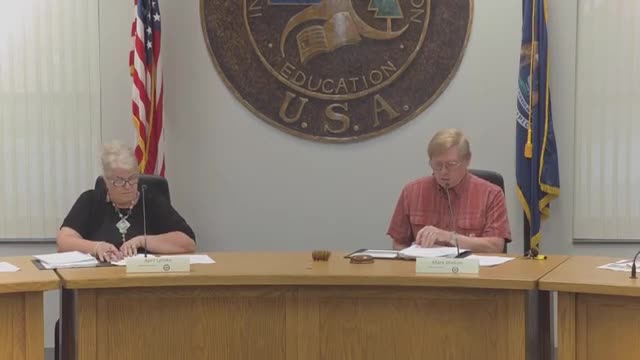Jack Frizzell Seeks Use Variance for Duplex at 128 North Lorne in Big Rapids
September 26, 2025 | Big Rapids, Mecosta County, Michigan
This article was created by AI summarizing key points discussed. AI makes mistakes, so for full details and context, please refer to the video of the full meeting. Please report any errors so we can fix them. Report an error »

In the heart of Big Rapids, city officials gathered under the warm glow of fluorescent lights to discuss a pivotal zoning variance request that could reshape a neighborhood. The Zoning Board of Appeals convened on September 25, 2025, to deliberate on a proposal from local property owner Jack Frizzell, who seeks to convert a duplex at 128 North Warren into two residential units, despite the property being zoned for single-family use.
Frizzell's request is rooted in a pressing need for quality residential spaces in the area, as he noted a surplus of office spaces but a shortage of clean, non-student housing. The duplex, which has a history of mixed-use—serving both residential and commercial purposes—has been primarily residential on one side since Frizzell acquired it in 2015. The other side has seen various occupants over the years, reflecting the property’s evolving role in the community.
The board's discussion highlighted the unique circumstances surrounding the property. The RP (Residential Professional) zoning designation allows for limited residential use, typically favoring single-family homes. However, the board acknowledged that the area is characterized by a mix of residential and commercial properties, with no complaints lodged against the current use of the duplex. This context led to a broader conversation about the city’s master plan, which emphasizes the need for increased housing density near downtown.
As the meeting progressed, board members expressed their support for Frizzell's proposal, emphasizing that allowing both sides of the duplex to function as residential units would not alter the neighborhood's character. They noted that the transition from commercial to residential use aligns with the city’s vision for a mixed-use environment, fostering a vibrant community where residents can live close to their workplaces.
Despite some concerns regarding zoning awareness among property owners, the board ultimately leaned towards approving the variance, contingent upon Frizzell's compliance with the city’s rental program. This decision could pave the way for similar requests in the future, reflecting a shift in how the city approaches zoning in light of evolving community needs.
As the meeting concluded, the board left with a sense of purpose, recognizing that their decisions today could significantly impact the fabric of Big Rapids tomorrow. The outcome of this variance request not only addresses immediate housing shortages but also signals a potential transformation in the city’s approach to zoning and community development.
Frizzell's request is rooted in a pressing need for quality residential spaces in the area, as he noted a surplus of office spaces but a shortage of clean, non-student housing. The duplex, which has a history of mixed-use—serving both residential and commercial purposes—has been primarily residential on one side since Frizzell acquired it in 2015. The other side has seen various occupants over the years, reflecting the property’s evolving role in the community.
The board's discussion highlighted the unique circumstances surrounding the property. The RP (Residential Professional) zoning designation allows for limited residential use, typically favoring single-family homes. However, the board acknowledged that the area is characterized by a mix of residential and commercial properties, with no complaints lodged against the current use of the duplex. This context led to a broader conversation about the city’s master plan, which emphasizes the need for increased housing density near downtown.
As the meeting progressed, board members expressed their support for Frizzell's proposal, emphasizing that allowing both sides of the duplex to function as residential units would not alter the neighborhood's character. They noted that the transition from commercial to residential use aligns with the city’s vision for a mixed-use environment, fostering a vibrant community where residents can live close to their workplaces.
Despite some concerns regarding zoning awareness among property owners, the board ultimately leaned towards approving the variance, contingent upon Frizzell's compliance with the city’s rental program. This decision could pave the way for similar requests in the future, reflecting a shift in how the city approaches zoning in light of evolving community needs.
As the meeting concluded, the board left with a sense of purpose, recognizing that their decisions today could significantly impact the fabric of Big Rapids tomorrow. The outcome of this variance request not only addresses immediate housing shortages but also signals a potential transformation in the city’s approach to zoning and community development.
View full meeting
This article is based on a recent meeting—watch the full video and explore the complete transcript for deeper insights into the discussion.
View full meeting
